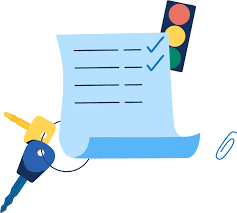
A Holiday Gift That’s White, Black and Read All Over
Jane Gould, PhD
(reprinted from Marin Independent Journal, Dec. 20, 2023)
If you are scrambling for a list-minute gift, I have one that flies under the radar. You won’t find it in those predictable lists of the Top 10 holiday gifts. But it has tremendous power to increase your attention span, educate your kids and bring us a better world in 2024.
It’s an annual subscription to a print newspaper. I don’t work for a newspaper and nobody is paying me to write this. Print newspapers have become an endangered species on the gift-giving list. But, if you step outside the box, the phone box in this case, there are important reasons to consider it.
Daily newspapers reach over the digital divide and bring both families and communities together. They make us less susceptible to news filters and biases from social media. And they provide kids and teens with an alternative to spending so much time scrolling social media.
We’ve all gotten in the habit of “snacking” on our news. But, it’s an unhealthy habit when it comes to getting in sync with the outside world. A media snack leaves us unnourished, just like junk food. We consume a lot of information, but we do not digest it well. We obsess over hashtags and trends, but we have ever-shortened periods of focus. This deficiency does not bode well for our society or for our children.
For the youngest children, a print newspaper (preferably spread out over the kitchen table), is an invitation to develop a reading habit. Even 4- and 5-year-olds are attentive to the pictures, comics and puzzles.
The massively big headlines suggest for them that some issues are more important than others. Print papers put stories in the heads of young readers. And individual stories become the inspiration for their school projects and homework assignments.
Educators know that children who read more model this behavior from their parents. So, having a print copy of the paper, not a digital one, is valuable. Digital papers are a personal experience, not a shared one. A child has no idea what their parents are looking at on an electronic device. They might intuit that they are looking at vacation sites or investigating the school lunch menus.
When kids don’t see adults reading a daily newspaper they don’t learn to either. News snacking seems entirely normal.
Since reading a digital paper is a solitary experience, parents are also less inclined to talk over the news stories and features with each other. In her book “Reclaiming Conversation,” Sherry Turkle from the Massachusetts Institute of Technology writes that we are losing the ability to talk with each other, as well as share. With less conversation, we become less empathic, less connected, less creative and less fulfilled. On electronic devices, parents are more distant, engaged in a personal dive that children find it hard to break into.
These days, family members no longer have to walk to the end of the driveway or mailbox to collect the news. But things can easily go astray when they depend upon social media to keep up. The news feed on social media is curated by an algorithm. It’s designed to lock in our attention, heighten our personal precepts and customize sales pitches.
Online news presents each of us with a personalized filter bubble. The selection of stories puts the readers’ interests at the center and creates a hyper individualized view of the outside world.
One of the most important gifts we can give each other this season is to reverse this trend and seize back what we have lost. It takes on double significance during the holidays and start of the new year, when we seek peace, less conflict and more good will.
The fractured world does not heal until we can collectively share our experiences and trust each other more. If you are looking for that last-minute gift and the best possible start for 2024, consider gifting a print subscription. Long after the holiday zest is forgotten, it will continue to shed light and enhance connectivity.

A Framework for Digital Training: Provisional Licenses
What’s the path for teens and preteens once the Congressional hearings on social media wrap up? Ideas are likely to come from the transportation field. There will be talk about using guardrails to keep social media in its place and slow down users. And then there will be a push towards civic education and instruction.
So, a provisional digital license/phone may sound suitable and it is something I have campaigned for over a number of years. Before we let kids go online, they need to be fortified with targeted classroom instruction, parental guidance, and real-time experience- just like in driver’s education. Earning a phone is not automatic– kids commit to doing the homework and completing challenges before they are safe on their own.
As in motoring, it takes a decade or longer after a technology emerges for the instructional need to be recognized. It was not until 1932 that drivers education classes were taught in the U.S. For digital education, it has taken nearly 12 years after the initial iPhone for digital education to get mandated.
Curriculums:
Today, just four states have a mandate for this: Texas, Delaware, New Jersey and California. In principle, California has begun the framework for a provisional license. It requires the state’s Instructional Quality Commission to slowly roll out a curriculum framework while considering how to incorporate media literacy content into English language arts, math, science, history and social science lessons.
But, if we are going to have an effective program in digital education, we might want to borrow some more ideas from driver’s education.
In the following table, I compare the two programs on some basics:
| Driver’s Education | Digital California |
|---|---|
| Roughly 10th grade- Ages 14, 15, onward | K-12 |
| Requires direct parental involvement | Primarily Teachers in Schools |
| Practice: inside the car, hands on | Practice: throughout the curriculum |
| Special Problems: DUI, drugs, speeding | Special Problems: Sexting, bullying, privacy |
| Safety: Car Seats, Seat Belts, Air Bags | Safety: COPPA (13 and under) |
continue reading…..https://bemobilesmart.com/drivers-training-digital-literacy-provisional-licenses/

ABOUT JANE GOULD, PhD
I started the DearSmartphone column in 2018. It is a traditional advice column with a modern twist. Readers discuss digital issues and the problems they present.
Be Mobile Smart continues in the DearSmartphone tradition. It drills down on the unique ways that our mobile devices channel our behaviors and collective intelligence. Be Mobile Smart is my personal calling as I have been a researcher in both the transportation field and communications. Feel free to read more about me.
